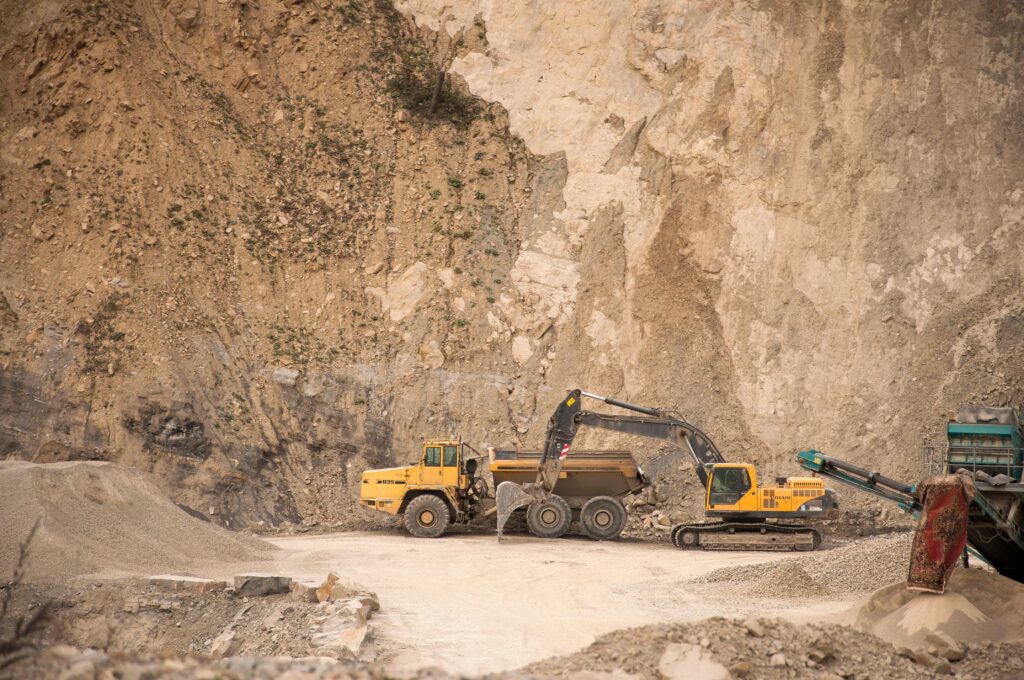Ventilation is the lifeblood of an underground mine. It provides fresh air to workers and removes harmful contaminants. However, manually adjusting ventilation systems reactively based on periodic sensor data is inefficient and risky. This article will explore how mines can shift to an intelligent proactive ventilation approach. It leverages real-time monitoring, automation, and data analytics.
We will examine the critical importance of adequate ventilation for health, safety, and productivity in underground mines. The limitations of conventional ventilation control will also be discussed. So, let us get deep into smart ventilation systems right away.
Why Ventilation Matters in Underground Mines?
One of the most asked questions is what is the purpose of ventilation in mining. There are several reasons proper ventilation is vital in underground mining operations:
Removing Contaminants
As personnel and equipment operate underground, their activities and diesel engines release gases. These include carbon monoxide, nitrogen oxides, and methane. Dust and diesel particulate matter are also generated. So, without constant fresh air exchange, these contaminants accumulate to dangerous concentrations. Furthermore, ventilation exchanges stale air with fresh intake air to remove these hazardous substances.
Supplying Oxygen
Personnel working underground consume oxygen while exhaling carbon dioxide. Without fresh air exchange, oxygen levels would drop too low to support life. So, proper ventilation brings in oxygen while removing carbon dioxide.
Controlling Temperature
Friction and equipment generate considerable heat underground. Ventilation exchanges hot air with the cooler intake air to manage temperatures. As a result, it creates acceptable working conditions for personnel. It also prevents equipment from overheating.
Emergency Response
In emergencies like fires or explosions, ventilation is critical. It clears smoke from evacuation routes. It also provides breathable air for mine rescue teams.
Optimizing Productivity
Insufficient airflow reduces concentration and performance for workers. Hot temperatures impair productivity and equipment operation. Moreover, optimized ventilation improves working conditions for peak performance.
We hope now you know what is the purpose of ventilation in mining. Furthermore, maintaining adequate ventilation through an extensive network of mine workings is a challenge. So, let’s examine the limitations of traditional ventilation control approaches.
Drawbacks of Conventional Ventilation Techniques
Traditionally ventilation is controlled by manually adjusting fans, airflows, and ventilation infrastructure based on sensor data. However, this reactive approach has major limitations to smart mine ventilation:
Time Lag
There is an inevitable delay between changing conditions underground and manual adjustments by personnel. As a result, this time lag leaves miners vulnerable to developing hazards.
Intermittent Data
Periodic sensor measurements may miss dangerous gas buildups or climate changes occurring between checks. So, intermittent data provides an incomplete picture.
Inflexibility
Pre-set ventilation schedules lack the flexibility to adapt airflow. It is based on real-time operational requirements in different mine sections.
Inefficiency
The absence of data prevents optimizing ventilation rates. Over-ventilating wastes huge energy. Meanwhile, insufficient air reduces safety and also productivity.
Human Error
Manual control relies heavily on personnel judgment. So, human error in adjusting ventilation or reacting to data can endanger workers.
These factors underscore the need for a proactive intelligent approach for mine ventilation. This is to optimize ventilation effectiveness.
Introducing Smart Ventilation Systems
Smart ventilation systems leverage connectivity, automation, and data analytics. It is to overcome the challenges of conventional control strategies. So, key elements of intelligent ventilation include:
Ubiquitous Sensors
Wireless sensors continuously monitor:
- Air quality parameters. It includes methane, carbon monoxide, nitrogen oxides, particulate levels, humidity, and also temperature
- Ventilation parameters like airflow velocities and pressure differentials
- Climate parameters like temperatures and humidity
- Operational parameters like personnel locations and equipment status
Robust Networks
Wired and wireless networks reliably transmit sensor data. It is to central servers for analysis, even from extensive underground workings. Furthermore, Mmesh architectures provide redundancy if network nodes fail. Additionally, long-range wireless handles sensor connectivity across distances.
Sophisticated Analytics
Analytics software leverages AI/ML algorithms. It processes real-time sensor data and ventilation models. This helps to evaluate the current status and predict outcomes of control changes. Moreover, this guides optimal mine ventilation decisions.
Automation and Remote Control
Automated control systems adjust ventilation infrastructure. It includes fans, airlocks, and regulators based on sensor data and pre-defined rules. Mine ventilation can also be remotely adjusted from surface control rooms or mobile devices underground.
Operational Integration
By interfacing with mine planning systems, ventilation can adapt based on scheduled activities. It includes blasting or vehicle movements in different operation zones.
Change Management
The workforce must be fully trained in the new smart ventilation systems. Moreover, personnel should provide input to optimize automation for human-machine collaboration.
This fusion of connectivity, analytics, and automation enables a revolutionary smart ventilation systems approach.
Impactful Applications of Smart Ventilation Systems
Intelligent mine ventilation delivers major benefits across safety, productivity, and sustainability:
Hazard Monitoring
Wireless gas sensors can continuously monitor air composition in all underground regions, detecting the buildup of toxic gases like methane and triggering automated ventilation actions or alerts. This enables pre-emptive hazard mitigation compared to periodic sensor checks. Personnel are also warned immediately if gas levels spike in their current location.
Emergency Management
In emergencies like fires, methane ignitions, or explosions, ventilation systems can rapidly redirect airflows. It is based on sensor data. It helps to remove smoke and provide breathable air to evacuation routes and first responders. Moreover, automated control responds much faster than manual adjustment.
Energy Efficiency
Optimization algorithms analyze sensor data on contaminants, climate, occupancy, and operations. This helps to minimize ventilation rates wherever possible without compromising air quality. As a result, this reduces the energy consumed by fans. Moreover, intelligent ventilation typically decreases energy costs by 15-20%.
Predictive Maintenance
Sensors continuously monitor the health metrics of ventilation fans. It includes vibration, temperature, and power consumption. Advanced analytics pinpoint deviations indicative of impending failures. As a result, it allows maintenance planning before shutdowns occur.
Climate Control
Based on sensor readings, automated ventilation controls maintain optimal temperatures and humidity levels. This is for worker comfort and equipment reliability. Moreover, this is more precise than pre-scheduled ventilation.
Activity-Based Ventilation
Tracking personnel locations and mine zones with active production activities allows focusing ventilation where it is most needed. Moreover, it takes place while reducing airflow to inactive areas.
Section Isolation
Airflow to mine sections closed temporarily for maintenance can be automatically isolated. It is to redirect air to operating areas. This is more responsive than manual controls.
So, the benefits of safety, sustainability, and efficiency make a compelling case to upgrade conventional mine ventilation.
Implementing Smart Ventilation Systems Technology
While benefits are substantial, realizing the potential of smart ventilation systems requires careful execution:
Sensor Infrastructure
Sensors must be installed for gases, ventilation parameters, climate, and operations. Wireless sensors enable ubiquitous data capture without wiring. Moreover, explosion-proof enclosures are required where needed.
Robust Networks
Dependable wired and wireless networks must connect sensors with centralized analytics systems. Mesh architectures provide redundancy if nodes fail. Long-range wireless relays data across distances.
Analytics Software
The software integrates monitoring, analytical algorithms, ventilation models, and automation rules. Moreover, data visualization dashboards provide insights.
Control Integration
Actuators and controls for ventilation fans, regulators, and airlocks must interface with analytics systems. This is to enable automation. Remote monitoring and control should be supported.
Operational Data
Interfaces with mine planning systems enable adjusting ventilation based on scheduled activities. It includes vehicle movements or blasting.
Validation and Optimization
Ventilation simulations help evaluate system performance. Furthermore, monitoring during initial deployment provides data to optimize automation logic.
Training and Adoption
The workforce must be trained to use new automation controls and associated mobile apps. Additionally, personnel should provide input to enhance system usability and human-machine collaboration.
With these steps, mines can upgrade conventional ventilation to intelligent systems for transformative gains. However, this transition requires critical organizational change management for success.
Navigating Change Management
Transitioning from manual to automated processes with smart ventilation Systems in mines is a big change. To make sure everything goes smoothly, a plan is needed. So, here are the key steps:
Talk About It
Share information early and often with everyone involved. Moreover, let them know when things will happen, what needs to be achieved, and how the changes will make things better.
Get Everyone Involved
Allow the teams who do the work to be part of the plan. They know the job best, so their ideas are valuable. As a result, this helps everyone feel more connected to the changes.
Teach Everyone
Train everyone on the new smart ventilation systems technology, the apps they’ll use, and how the automated processes work. Moreover, the more they practice, the better they’ll get.
Keep an Eye on Things
After the changes, monitor how things are going. Additionally, ask people for their thoughts and suggestions to make things even better.
Show the Benefits
When good things happen, like saving energy, communicate it to everyone. As a result, this helps everyone see why the changes are worth it.
With these steps, mines can smoothly make the switch to smart ventilation systems and enjoy all its benefits.
Exploring 5th Mining 4.0: North America 2024
For mining leaders looking to capitalize on smart ventilation systems and other emerging technologies, the 5th Mining 4.0: North America 2024 summit on April 10-11 in Toronto, Canada offers an ideal opportunity.
This premier industry event will showcase cutting-edge innovations advancing mine safety, efficiency, sustainability, and productivity. Furthermore, technical experts will share real-world case studies. These will be on successfully leveraging analytics, automation, and electrification. Insights will be there for overcoming change management hurdles when transitioning to smart mining systems.
Through panel discussions and interactive sessions, attendees can connect with peers and technology leaders driving the Mining 4.0 revolution. Additionally, the event provides tremendous learning and networking opportunities to explore mining’s digital future. So, make sure you register right away!





